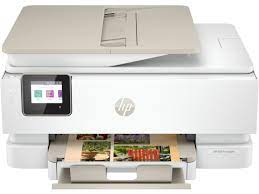Table of Contents
Okay. The image may be a bit dramatic. But, if you have suffered important data loss, it's tame in comparison.
A backup is a copy of your data on a second device. Simple as that. This means your data, such as pictures and documents, is stored on two or more separate devices - on your computer like always and another device, such as a second, internal hard drive or an external flash or hard drive. If one fails, you can still get at your data stored on the other device.
This can be done manually using "copy and paste" or "click and drag". However, this technique NEVER works in the long run because:
- You quickly adopt the "I'll do it later" mentality.
- You are struck with "fumble fingers" and copy/paste/click/drag files to parts unknown.
- You overwrite new data with old data, not the other way around.
- Any number of countless ways the backup does not get done.
How is data lost?
We've witnessed 30 years of data loss:
- Hard Drive failure due to electronic failure, theft, fire, or water
- Accidentally deleting, editing, or overwriting data
- File corruption for known or unknown reasons.
- Sudden shutdown while saving data or before saving the first time.
- Infection or encryption attack.
- A drive with BitLocker enabled is rendered unbootable due to loss of encryption key.
- Lost, broken, or failed flash drive, camera card, or internal or external drive.
- Locked out of a computer, laptop, tablet, or phone due to forgotten or incorrect login information.
- Locked out of email or social media accounts.
- Lost access to recovery phone number or email.
- Program freeze for no apparent reason before you saved your work.
- Failure of online/cloud backup services due to forgotten/lost login credentials, recovery phone, or email.
- Maxing out your cloud backup before you realize it, then failure occurs.
- You find out your backups have not been working for days, months, years and you need to recover data.
- Data saved somewhere unknown.
- New and creative ways we have not seen yet.
Requirements
- The backup must be fully automated. All that must be done to run a backup is for the computer to be turned on.
- The backups must be saved on a reliably connected drive. We strongly recommend a second drive installed internally. Something that can't be accidentally unplugged, lost, stolen, dropped, knocked over, etc. Sometimes this is not possible, such as with laptops, so an external, USB connected drive is the second best choice.
- Some sort of notification indicating success or failure of the backup, so you know if the backups are working.
- Enough storage space to store many old backups, just in case you need to go back a few days.
- The backup must be of the ENTIRE computer - programs and data. Data can be stored all over the place, not just in the normal locations. In the event of drive failure, the entire computer can be restored, resulting in a recovery that is up and running immediately - no reloading necessary.
- Restoring data is dangerous if not done properly. We recommend contacting us first.
What do we recommend?
The only software that fits the bill for consumers, not a full on corporate environment, is a program called "Acronis Cyber Protect Home Office", formerly called "Acronis True Image".
This product satisfies all of our requirements. The one downside is Acronis recently adopted a subscription model. Instead of paying a one time fee it's an annual charge, much like antivirus programs.
What's nice about the product is that it can be purchased with built-in "Cloud backup" capabilities using the same program as the normal backup service. This comes in handy when you need off-site backup of specific, high value data that cannot be lost for any reason, such as financial data.
The non-cloud license can be upgraded with cloud storage for an additional charge..
What about "Cloud Backup"
Cloud backup is simply storing your data on the Internet. The advantages is that it's offsite, meaning if the computer AND local backups disappear due to loss, fire, theft, etc., you have a copy on the Internet somewhere that you can log into and retrieve your data.
What are the downsides of cloud backup?
- It's prone to reliability issues and can be slow.
- It can be very "glitchy". Things may not work for no known reason.
- Requires keeping track of your login information and account recovery options.
- There are free storage options up to a point. Anyting more requires a paid subscription. Still pretty cheap.
- Requires a reasonably fast Internet connection.
- The data is stored on the Internet and vulnerable to unauthorized access.
- You cannot reliably backup your ENTIRE computer to the Internet. Corporate backups can do this when combining local storage and Internet syncing.
Sharing files
Backup up data and sharing files are two different things. The idea with sharing files is to store the files in a location accessible by other authorized computers. devices, and users. Before the Internet, one would typically have a computer in the office called a "server". Instead of storing data on your personal computer, the data is stored on a server that others have access to.
The Internet is now the "server". A website is used to store files. That same website is accessible by others authorized to read or edit those files.
The only service that I recommend that has proven to be simple to understand and reliable is "Dropbox". When installed, a specific folder is created on your computer called "Dropbox". Anything stored in that folder is automatically synchronized with your Dropbox account. Anything NOT in the folder is NOT synchronized. This is important because there are files you may not want stored on the Internet. Those files are simply not stored in the "Dropbox" folder.
Summary
We can set up a fully automated backup system. We typically would need the computer or laptop in the shop to install and test.




